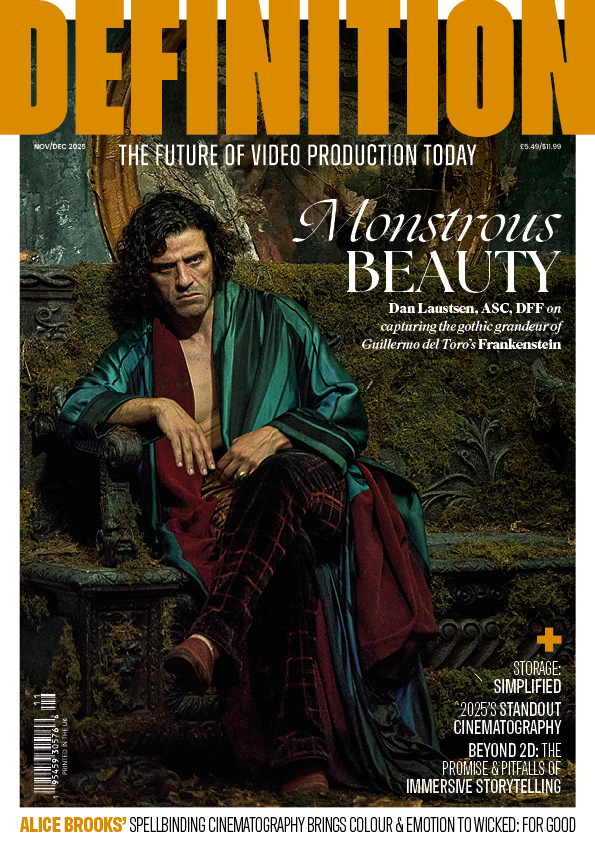
International industries: Filmmaking in Ireland
Posted on Oct 24, 2025 by Admin
Ireland is playing host to a rising number of productions across film and television. The Irish Society of Cinematographers ensures local talent isn’t overlooked
Words Katie Kasperson
Known for its rolling hills and rainy skies, the island of Ireland has all the elements of the ideal filming destination. From the beach at Curracloe doubling as Normandy in Saving Private Ryan, to Fair Head becoming Game of Thrones’ Dragonstone cliffs, to the Cliffs of Moher making an appearance in Harry Potter and the Half-Blood Prince, Ireland capitalises on its coastal topography.
Fortunately for filmmakers, the region also boasts ease of transport, as it’s a sub-three-hour journey from Galway to Dublin. “Without shouting it too loud, we seem to be one of the places working a lot,” begins JJ Rolfe, president of the Irish Society of Cinematographers (ISC).
“There’s a mixture of different things happening here,” he continues, including the second and third seasons of Netflix’s Wednesday – “primarily shot by two ISC cinematographers,” Rolfe notes – and the production of feature films like The Banshees of Inisherin. “I don’t want to say it’s booming, but we’re certainly busy.”
On the map
Key to Ireland’s appeal are, of course, the financial incentives offered to visiting filmmakers. “There’s one healthy thing called Section 481; a kind of tax rebate,” says Rolfe. He’s referring to the Section 481 Film Tax Credit, also called Film Relief, equal to 32% of eligible expenditure or €125 million (whichever is lower). This cap was recently bumped up from €70 million to attract larger productions.
While blockbuster films like Braveheart and Saving Private Ryan put Ireland on the map, TV series like Game of Thrones cemented it.
“Ireland’s a funny one,” comments Rolfe. “It’s not Paris or London – people aren’t coming here for Dublin unless it’s a Dublin-focused movie. There’s a lot of period work,” he explains, citing Vikings – a TV show co-produced between Ireland and Canada – as another example.
Ireland’s two industry hubs are Dublin and Belfast, according to Rolfe. “We’ve got the studio space, and then lots of great natural landscapes too. Within the radius that productions are able to work, you can go straight from being in the mountains or urban areas to being at the sea,” he says. Limerick is also on the rise as another hub, having hosted Apple TV+’s Foundation in its Troy Studios.
While acknowledging Ireland’s facilities and financial perks, Rolfe also believes the talented local crews are what’s keeping productions coming back. “There’s been a lot of variety in the shows that come through Ireland, which has given local crews experience working within different systems. There’s a good problem-solving mentality; plus, they want to do their best and feel that they’re representing Ireland,” he shares. “It’s a lovely family that looks after each other and fosters a real can-do attitude – without sounding corny,” he laughs.
Going grassroots
The ISC was founded in 2010, in part to respond to growing demand, but more so to promote Irish talent. “Historically, there was a preconceived notion that if somebody was doing good work as a DOP in the UK, it would be better to bring them in than to have an Irish DOP,” Rolfe explains. “A lot of the time, we would have to leave. The difficulty is always in trying to compete. With the scale of shows that are coming into Ireland at the moment, we are trying to highlight just how good the resources are.”
Rolfe, who’s been ISC president since March 2025, has been a member of the society for five years. “There are currently 34 active members and 20 associates. We’re small,” he notes, “but we’ve got really talented people who have been nominated across various international awards.” John Conroy, for instance, is up for an Emmy this year, while Robbie Ryan is a two-time Oscar nominee.
“The ISC was built to engage with people, answer questions and inspire,” Rolfe details. “That’s the remit I got when I was elected president – to help that along and continue growing the organisation.” The ISC’s onboarding process is fairly standard; “any member can put forward a cinematographer they feel is worthy of joining. Nine times out of ten, anybody who’s good enough to be put forward is asked to join,” he admits.
“If you’re going to take on the letters, you don’t just take them and run away,” Rolfe clarifies to prospective members. “You’re going to have to help out too.” For him, being able to meet and talk process with other DOPs has been the highlight of joining the ISC. “It’s an open organisation, and we have got good communication. There’s a rich talent pool here; Ireland is a great place to come and work.”
Find out more about the industry around the world in our view of Belgium.
This story appears in the September/October 2025 issue of Definition










